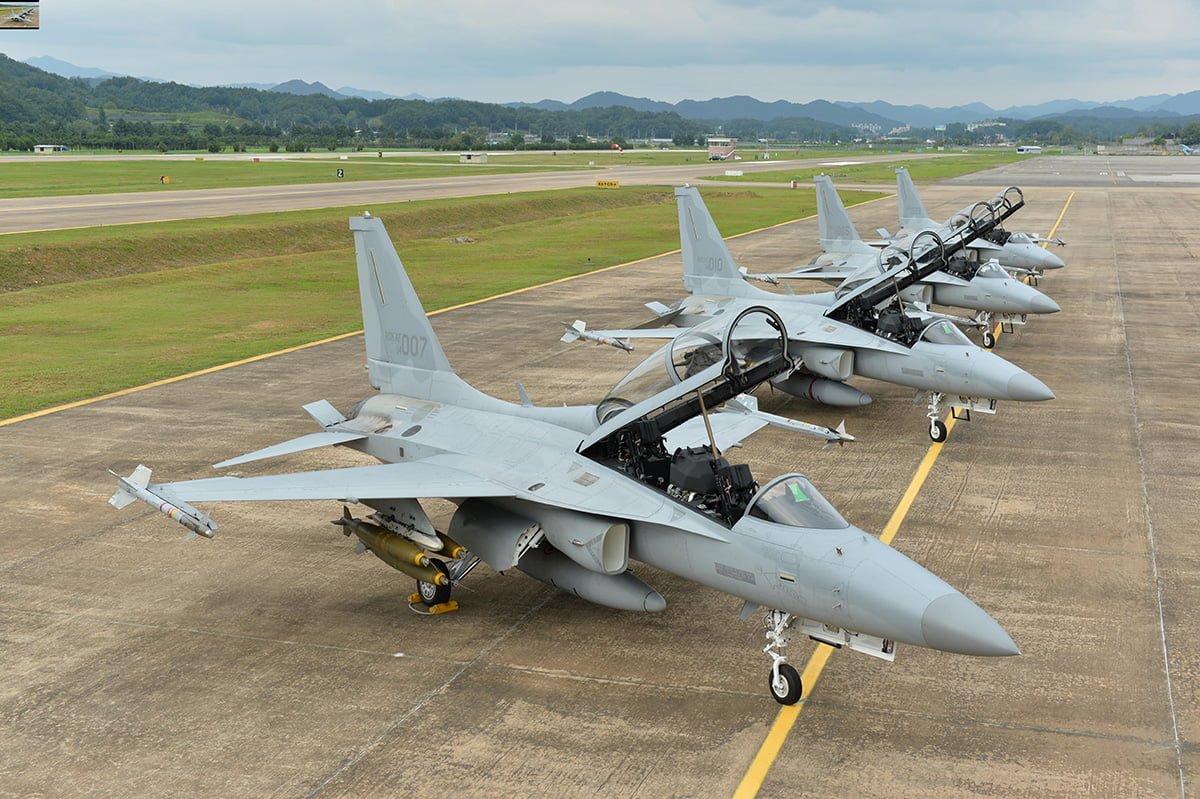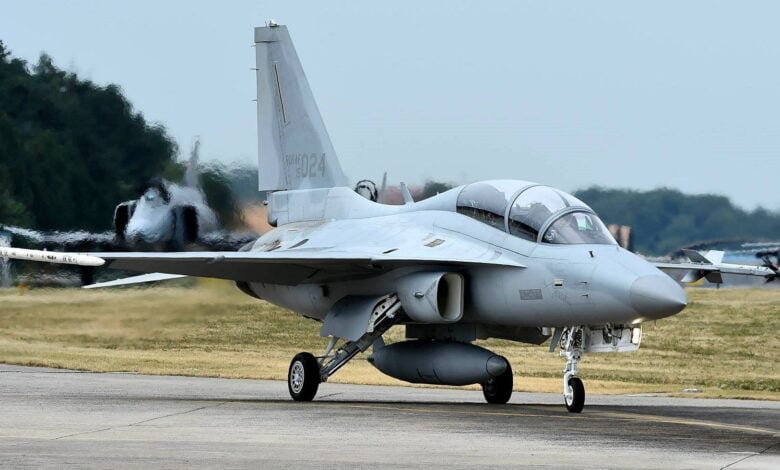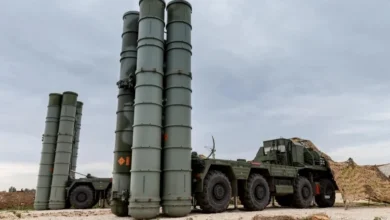Competitor To India’s LCA Tejas, South Korea’s Fighter Jet Is Looking For A Big Deal In Egypt After Completing A Hat-Trick

- India, like South Korea, has tried to sell its Tejas fighter jet to countries in Southeast Asia, West Asia, and North Africa. But, unlike the FA-50/T-50 jets, the LCA Tejas has not been able to get a single export deal so far.
South Korea wanted to sell its FA-50 light attack fighters to Egypt. The protest showed that Egypt wants to work closely with South Korea on defence issues.
As part of the Pyramids Air Show 2022, South Korea’s Black Eagles aerobatic team flew T-50Bs over the pyramids in Giza, Egypt, along with Egypt’s Silver Stars aerobatic team, which flew K-8E Karakorums.
About 1,000 people went to the air show, including top officials from Egypt and South Korea.
Ambassador Hong said, “It’s an honour to be here to see this historic place.” “We both agree that this time’s air show shows how much trust there is between the two countries.”
Egypt’s Air Force worked with the company that made the fighter, the Korean Air Force, and Korea Aerospace Industries (KAI) to set up the flight.
KAI said in a statement that the flight of the Black Eagles T-50B means that the FA-50 light attack aircraft can be sent to Egypt.
The flyby was a way for KAI to show off its T-50 supersonic trainer jet and try to get the Egyptian Air Force to buy it.
Egypt wants to buy about 100 trainer jets. This would make Egypt the second largest market for trainer jets, after the US, which needs about 500.
Besides the T-50 from South Korea, the AVIC L-15 from China and the Leonardo M346 from Italy are also in the running for Egypt’s contract. By 2023, the Egyptian Air Force should have chosen a model.
KAI’s FA-50/T-50 On A Winning Streak

If the KAI’s T-50 wins, Egypt would be the fourth country to buy the South Korean trainer jet after Indonesia, Thailand, and Columbia.
The T-50 is being pushed in Egypt after Poland signed a deal in July to buy 48 FA-50 jets from Korea.
South Korea has been working hard over the past few years to sell the FA-50 to other countries.
Other countries that have bought FA-50s are the Philippines and Iraq. During the Battle of Marawi in the Philippines, the plane was used for the first time to fight terrorists who were part of the Islamic State.
Also, according to reports, Colombia’s Air Force has chosen a mix of T-50 and FA-50 planes as part of a $600 million programme to replace its Cessna A-37B Dragonfly twin-engine light-attack fleet jets.
KAI wants to sell a thousand FA-50s in the next ten years. In July, the president of KAI, Ahn Hyun-ho, said that sending out 1,000 jets would open up a market worth 40 trillion won in sales and 100 trillion won in logistics support.
The Fighting Eagle Vs. India’s LCA-Tejas

Egypt could also buy the FA-50 Fighting Eagle, which is a light attack version of the T-50. This was already said.
EurAsian Times said that the Egyptian Air Force wants to buy about 70 light fighter jets, with a focus on local production and sharing of technology. Along with the FA-50 from South Korea, the LCA Tejas from India is also in the running.
The company that makes Tejas, Hindustan Aeronautics Limited (HAL), has also offered to set up factories in Egypt.
India, like South Korea, has tried to sell its Tejas fighter jet to countries in Southeast Asia, West Asia, and North Africa. But, unlike the FA-50/T-50 jets, the LCA Tejas has not been able to get a single export deal so far.
Egypt is not the only country competing for the contract to buy 36 light fighter planes for the Royal Malaysian Air Force. The FA-50 and LCA Tejas are also in the running (RMAF).
At first, the JF-17 from Pakistan, the MiG-35 and Yak-130 from Russia, and the Hurjet from Turkey were also in the running. However, recent reports say that only the Korean and Indian jets are still in the running.
Reports about which fighter has the best chance of getting the contract have been all over the place.
Early in July, there were reports that the Malaysian government had chosen the LCA Tejas because India was offering a package deal to set up a maintenance, repair, and overhaul (MRO) facility in Malaysia for its fleet of Sukhoi Su-30 fighter jets, which were made in Russia.
But soon after that, a Singapore-based news outlet said that a senior KAI official told them that Malaysia could choose the F-50 instead of the LCA Tejas.
EurAsian Times talked to a professional to find out how likely it was that each fighter would get the Malaysian contract.
He Yuan Ming, an independent airpower analyst, told EurAsian Times that “the unit cost of the Tejas is thought to be around $42 million, while the FA-50 is several million dollars cheaper.” Since Malaysia wants up to 36 LCAs, it would save a lot of money if it went with the FA-50.
“However, cost isn’t the only thing that goes into a decision to buy weapons,” Yuan Ming said. “Tejas might be appealing to Malaysia because it uses the same General Dynamics F404 engine as the RMAF’s F/A-18 Hornets, which makes it compatible with the RMAF’s logistical base.”
Yuan Ming also pointed out that the Tejas was similar to the RKAF’s mainstay, the Su-30, because it could accept Russian weapons.
He also said that the fact that some parts of Tejas’s avionics suit are made in Israel is a big problem. Considering how Malaysia feels about the Jewish nation, it could affect what they decide in the end.
“In fact, if the Indian plane is chosen, it is not out of the question that all the “Made in Israel” parts would have to be changed to something that is more politically acceptable. This will always mean extra costs.”
Yuan Ming said that the FA-50 has a reliable F404 engine and can use Western weapons. This gives it logistical similarities with the RMAF’s Hornet fleet and probably lower costs in the long run.
He also said that the Golden Eagle is a fairly well-known platform in the area because Indonesia and Thailand also use it.
“If the RMAF got this plane, it would be easier for its major regional partners to work together during exercises and operations.” “Also, the FA-50 has been used in battle, as the Philippines did against the Marawi rebels,” Yuan Ming said in his conclusion.







Facebook Comments